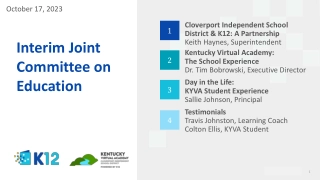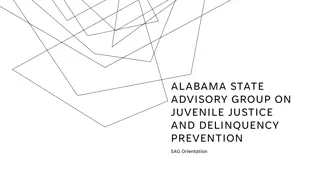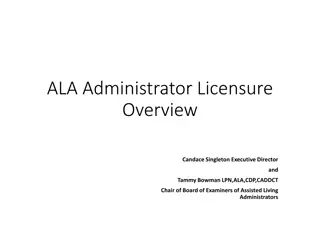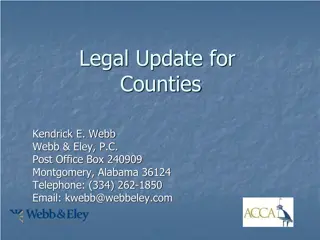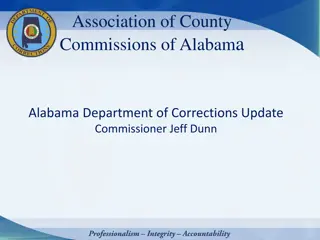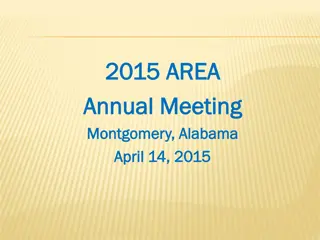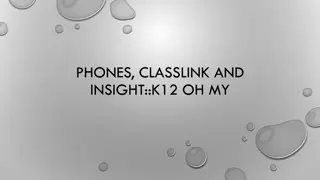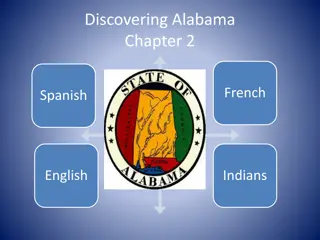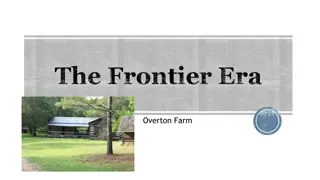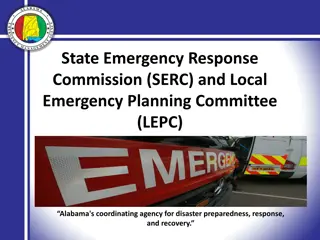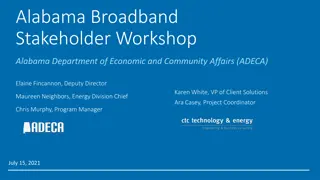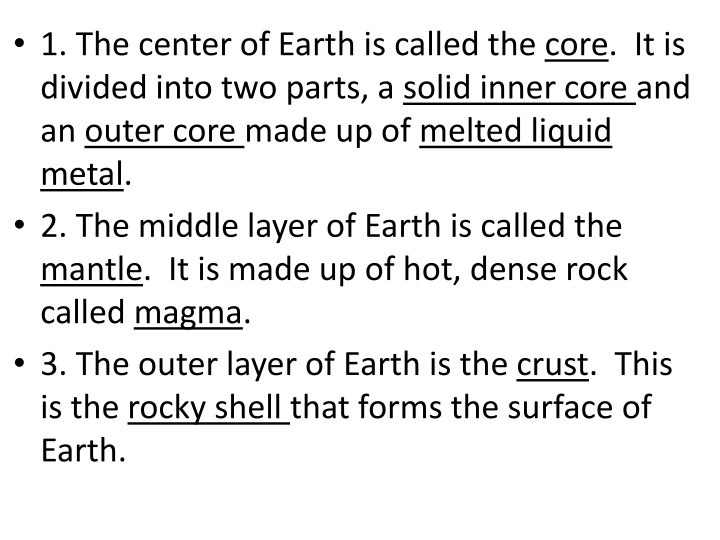
Earth's Layers and Climate Zones Explained
Explore the composition of Earth's layers, including the core, mantle, and crust, and understand the factors influencing climate, such as elevation, wind currents, and landforms. Discover different climate zones like tropical, desert, polar, and more. Learn about the geological processes like earthquakes, volcanoes, and tsunamis that shape our planet's surface.
Download Presentation

Please find below an Image/Link to download the presentation.
The content on the website is provided AS IS for your information and personal use only. It may not be sold, licensed, or shared on other websites without obtaining consent from the author. If you encounter any issues during the download, it is possible that the publisher has removed the file from their server.
You are allowed to download the files provided on this website for personal or commercial use, subject to the condition that they are used lawfully. All files are the property of their respective owners.
The content on the website is provided AS IS for your information and personal use only. It may not be sold, licensed, or shared on other websites without obtaining consent from the author.
E N D
Presentation Transcript
1. The center of Earth is called the core. It is divided into two parts, a solid inner core and an outer core made up of melted liquid metal. 2. The middle layer of Earth is called the mantle. It is made up of hot, dense rock called magma. 3. The outer layer of Earth is the crust. This is the rocky shell that forms the surface of Earth.
Physical System Made up of Water: oceans, seas, lakes, ponds, rivers, groundwater, and ice Hydrosphere Landforms: mountains, hills, plateaus, plains, and ocean basins Lithosphere Gases: nitrogen, oxygen, and other gases Atmosphere Living things: people, animals, and plants Biosphere
Factors that Influence Climate 1. Elevation: The atmosphere is thinner at higher elevations so the air holds less heat. 2. Wind and Ocean Currents: The movement of air and water helps to balance the temperature on Earth. 3. Weather: Weather conditions that occur in an area over a long period of time determine the region s climate. 4. Landforms: Landforms and land masses change the strength, speed, and direction of wind and ocean currents and affect precipitation.
Climate Zone Description Tropical Hot and Rainy Dense forests Desert Dry Can be hot or cold depending on latitude Humid Temperate All types of weather Changing seasons Cold Temperate Generally cold and windy Short summer season Polar Very cold Ice and snow covering the ground most of the year High Mountain Variable conditions because the atmosphere cools with increasing elevation Found at the tops of high mountain ranges
BELLWORK LOOK AT THE PICTURES ON PAGE 53. IN JOURNAL: TELL WHAT CAUSED THE EVENTS HAPPENING IN THE PICTURES.
Lesson 2 Effect: Creates Landforms such as mountains, volcanoes, and islands. Cause: The surface plates that make up Earth s crust move and shift over millions of year.
EeEA EFFECT: Earthquakes CAUSE: The surface plates move suddenly along fault lines.
EFFECT: CAUSE: A volcano erupts or the surface plates move suddenly under the ocean floor. Tsunami
Force Explanation Example Weathering Earth s surface is worn away by forces such as wind, rain, chemicals, and the movement of ice or water Chipped edges or smoothed features on an old building or statue Erosion Weathered bits of rock are moved elsewhere by water, wind, or ice Grand Canyon formed partially by erosion caused by water and winds Buildup and Movement The buildup of materials moved by water, ice, or snow creates landforms such as beaches, islands, and plains Sandy beaches are formed by waves pounding rocks into tiny grains of sand and depositing them along the coastline. Human Actions Such as mining, building canals, cutting down trees, and pollution change the surface of Earth Entire mountains have been level by coal mining
Chapter 2, Lesson 3 Land and Water
Land Takes Different Forms 1. a flat landform that rises above the surrounding land Plateau 2.a flat or gently rolling landform that can be found inland or along a coastline. Plain
3. a lowland area between two higher side valley 4. the largest of all landmasses that can be bordered by land and water or completely surrounded by water. continent 5. a smaller landmass that is completely surrounded by water Island 6. a long, narrow landform that extends into a river, lake, or ocean peninsula
7. a narrow strip of land connecting two larger land areas Isthmus 8. an underwater plain that borders a continent Continental shelf 9. a long, narrow, steep-sided cut in the ground or the ocean floor Trench 10. a string of mountains on land or on the ocean floor Mountain range
1. The water on Earths surface is mainly freshwater. False About 97% of Earth s water is saltwater. 2. Plants and animals can t live in salt water. False Salt water supports a huge variety of plant and animal life.
3. Desalination is a process that makes salt water safe to drink. True 4. Most freshwater on Earth is found in lakes, rivers, ponds, swamps, marshes, and underground. False Most of Earth s freshwater is frozen in Arctic and Antarctica ice caps.
5. Groundwater contained inside Earths crust is an important source of drinking water. True 6. The world s four huge oceans are all connected to form one enormous global ocean. True 7. A coastal area where ocean water is completely surrounded by land is called a bay. False A bay is a coastal are where ocean water is partially surrounded by land.
8. A gulf is a larger area of ocean waters surrounded by continents and islands. True 9.Most rivers begin at an ocean or lake and flow toward higher ground. False Rivers begin at a source where water feeds into them and flow into another source of water, such as a lake, another river, or an ocean. 10. A delta is an area where sand, silt, clay, or gravel is deposited at the mouth of a river. True
1. EVAPORATION Heat energy from the sun Causes liquid water to Change into water vapor And become part of the atmosphere COLLECTION 3. PRECIPITATION 2. CONDENSATION Water vapor rises, gathers, into clouds, and Transforms into a denser Liquid or solid state Water falls back To Earth s surface As rain, hail, or snow


